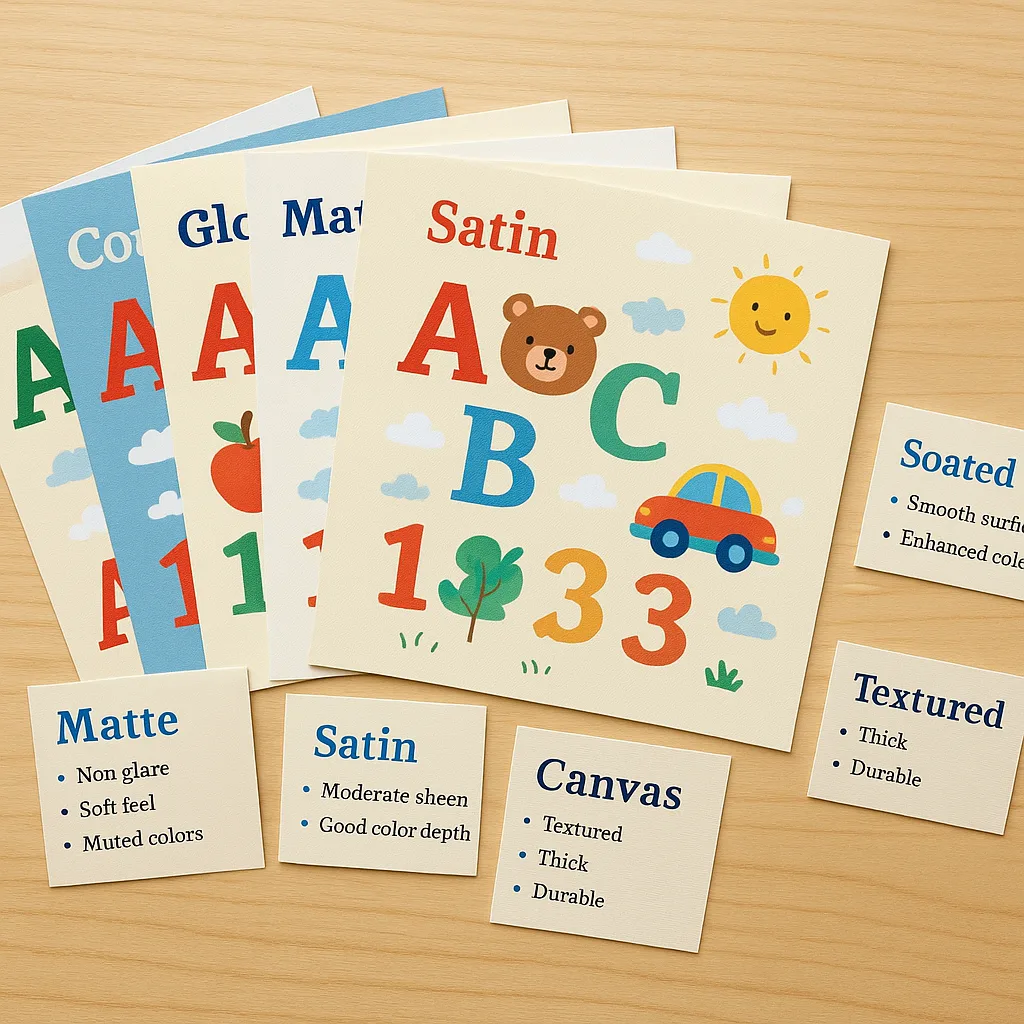Poster Paper Types Guide for School Administrators
The Complete School Administrator’s Guide to Poster Paper Types
As a school administrator, understanding poster machines paper selection can make the difference between a successful visual learning program and one that drains your budget. Furthermore, choosing the right paper type ensures your investment in a poster maker machine delivers maximum value for years to come.
Understanding Your Poster Machines Paper Selection Options
After fifteen years in educational leadership, I’ve learned that the right paper choice can transform how teachers use their classroom poster maker. Moreover, selecting appropriate materials impacts everything from budget allocation to long-term durability. Today, I’ll guide you through each paper type, helping you make informed decisions that support both your educators and your bottom line.

Why Paper Selection Matters More Than You Think
When investing in poster printing equipment, many administrators focus solely on the machine itself. However, paper selection directly impacts your total cost of ownership. Additionally, the right paper choice affects display longevity, visual impact, and even student engagement levels. Let me share insights from our district’s experience implementing poster makers across 12 elementary schools.
First, consider that paper costs typically represent 40-60% of your ongoing printing expenses. Therefore, understanding each option helps you budget accurately. Second, different paper types serve distinct educational purposes. For instance, glossy photo paper creates stunning visual aids for science demonstrations, while matte options reduce glare in brightly lit classrooms.
Comprehensive Paper Type Analysis
Coated Poster Paper
Our most popular choice for everyday classroom useBest Value Option
Cost per sq ft: $0.12-0.18Durability: 6-12 months indoors
Best for: Bulletin boards, temporary displays
Finish: Semi-matte with protective coating
Perfect for high-volume printing needs!
Glossy Photo Paper
Vibrant colors with professional photo finishPremium Visual Impact
Cost per sq ft: $0.25-0.35Durability: 1-2 years with lamination
Best for: Science diagrams, art displays
Finish: High-gloss reflective surface
Ideal for showcasing student work!
Matte Poster Paper
No glare option perfect for learning environmentsClassroom Favorite
Cost per sq ft: $0.20-0.28Durability: 8-14 months indoors
Best for: Reading materials, math charts
Finish: Non-reflective smooth surface
Reduces eye strain during lessons!
Canvas Material
Textured surface for artistic presentationsMuseum Quality
Cost per sq ft: $0.45-0.65Durability: 3-5 years
Best for: Permanent installations, art rooms
Finish: Textured fabric-like surface
Creates gallery-worthy displays!
Vinyl Options
Waterproof and tear-resistant materialUltimate Durability
Cost per sq ft: $0.35-0.50Durability: 2-3 years outdoors
Best for: Hallways, outdoor events
Finish: Smooth wipeable surface
Perfect for high-traffic areas!
Satin Photo Paper
Combines benefits of glossy and matteBalanced Choice
Cost per sq ft: $0.22-0.32Durability: 1-2 years indoors
Best for: Multi-purpose displays
Finish: Low-glare with color pop
Versatile for any application!
Making Smart Purchasing Decisions for Your Poster Machines Paper Selection
Successfully managing paper inventory requires strategic planning. Initially, I recommend starting with a mixed starter pack to test different options. Subsequently, track usage patterns across grade levels and subjects. This data-driven approach helps optimize future purchases while minimizing waste.
Budget Planning
Consider annual contracts for consistent pricing. Additionally, bulk purchases of frequently used papers reduce per-unit costs significantly.
Storage Solutions
Maintain 40-60% humidity levels in storage areas. Furthermore, vertical storage prevents curling and extends paper life considerably.
Usage Tracking
Implement sign-out sheets for specialty papers. Consequently, you’ll identify trends and prevent overuse of expensive materials.
Cost Analysis and ROI Calculations
Matching Paper Types to Educational Objectives
Different educational goals require specific paper characteristics. For example, kindergarten classrooms benefit from durable, wipeable vinyl for alphabet charts. Meanwhile, high school science departments need high-resolution glossy paper for detailed diagrams. Understanding these connections helps justify paper expenses to stakeholders.
Elementary School Applications
Primary grades need papers that withstand frequent handling. Therefore, I recommend coated poster paper for daily instructional materials. Additionally, consider laminating options for items like number lines and sight word charts that see constant use.
Secondary School Requirements
Middle and high schools demand professional-quality outputs for presentations. Consequently, satin and glossy papers become essential. Moreover, STEM departments particularly benefit from high-resolution options that accurately reproduce complex diagrams and formulas.
Environmental Considerations and Sustainability
Reduction in paper waste with proper selection strategies
Schools choosing eco-friendly paper options when available
Implementation Timeline and Staff Training
Rolling out new paper options requires careful planning. Initially, introduce one new paper type per month to avoid overwhelming staff. Subsequently, gather feedback through brief surveys. This measured approach ensures smooth adoption while identifying potential issues early.
Professional development plays a crucial role in maximizing paper usage. Therefore, schedule quarterly workshops demonstrating best practices for each paper type. Additionally, create video tutorials for common applications. These resources empower teachers to make informed choices independently.
Quality Control and Vendor Management
Maintaining consistent quality requires ongoing vendor relationships. First, establish clear specifications for each paper type. Next, implement regular quality checks upon delivery. Furthermore, document any issues to negotiate better terms during contract renewals.

